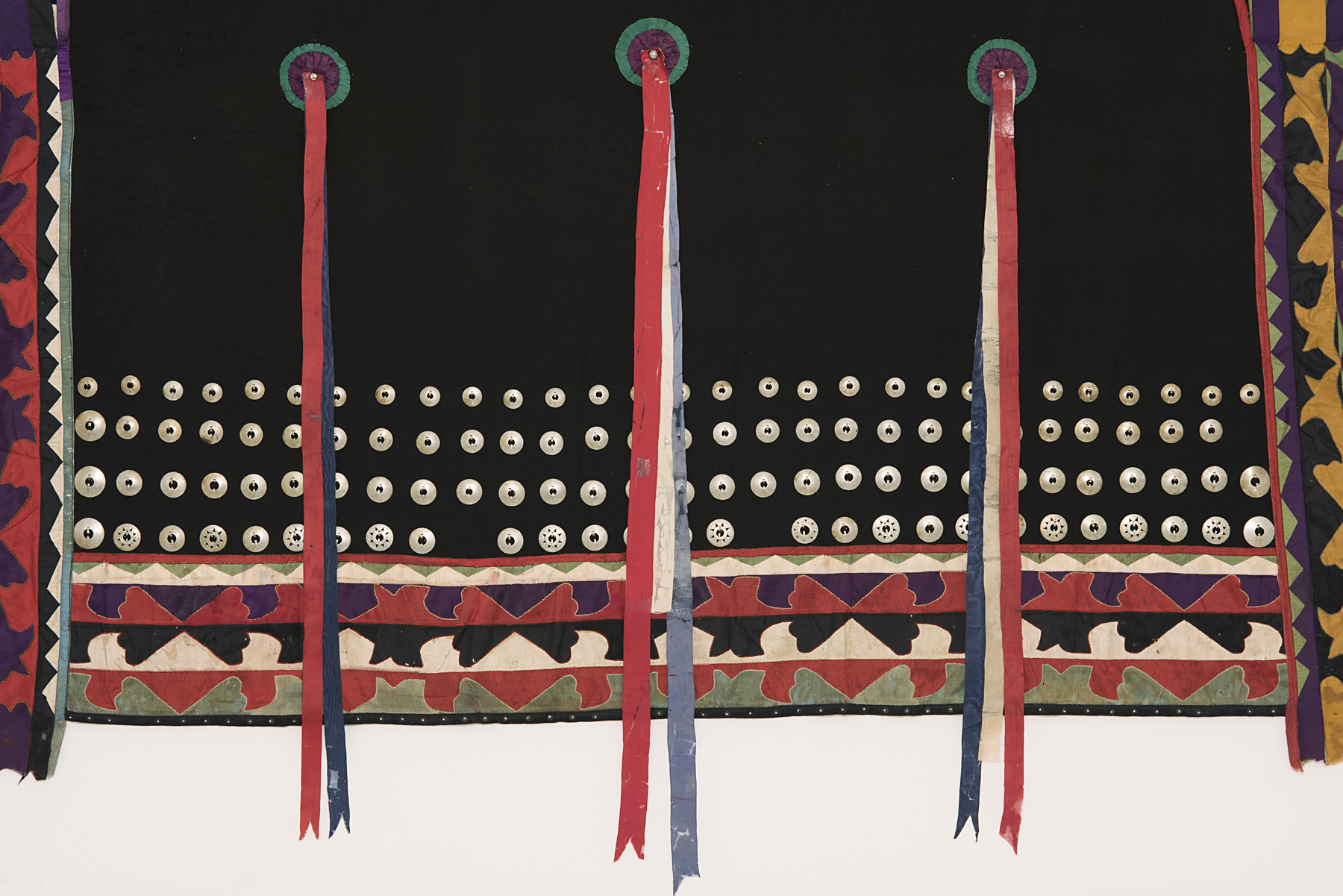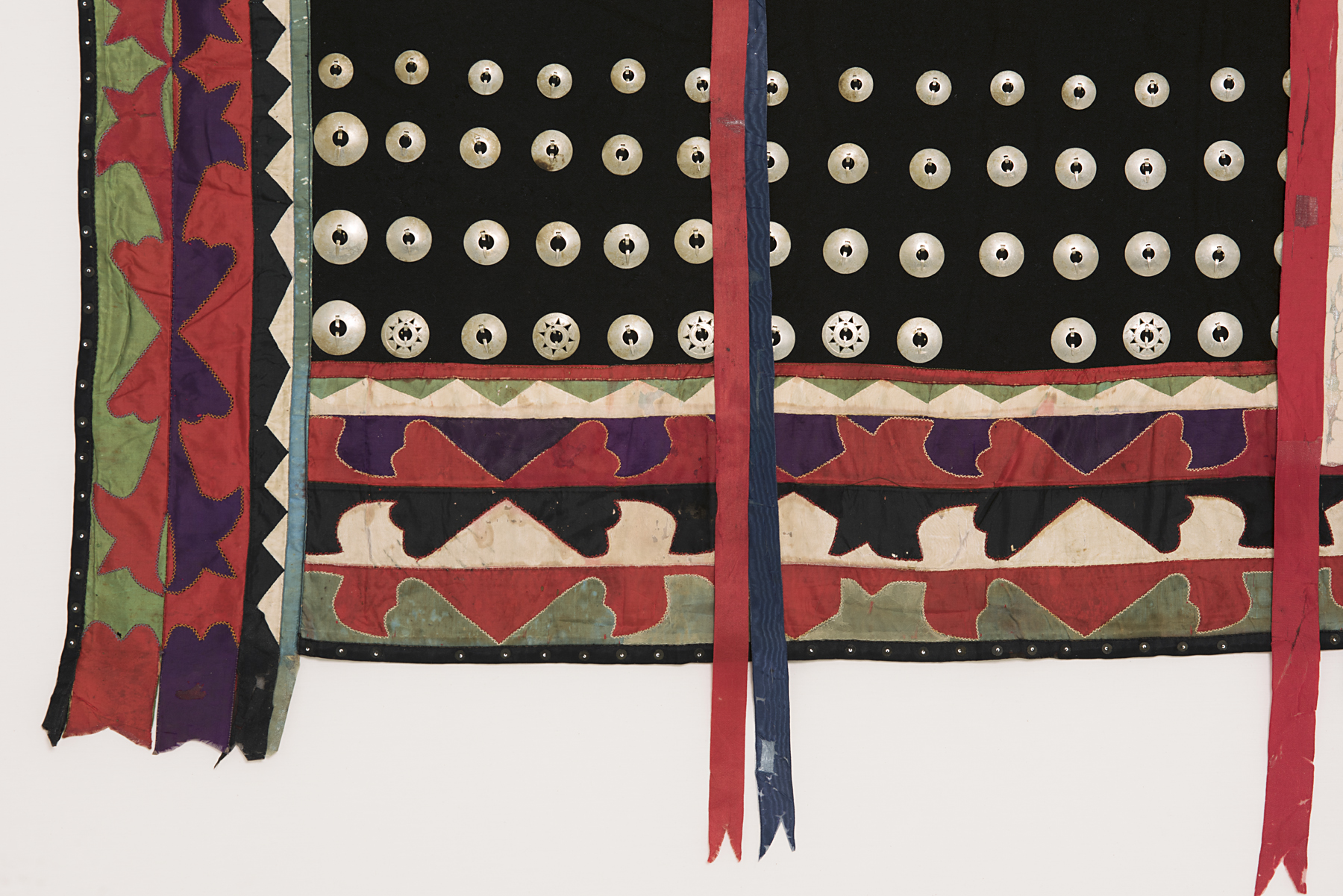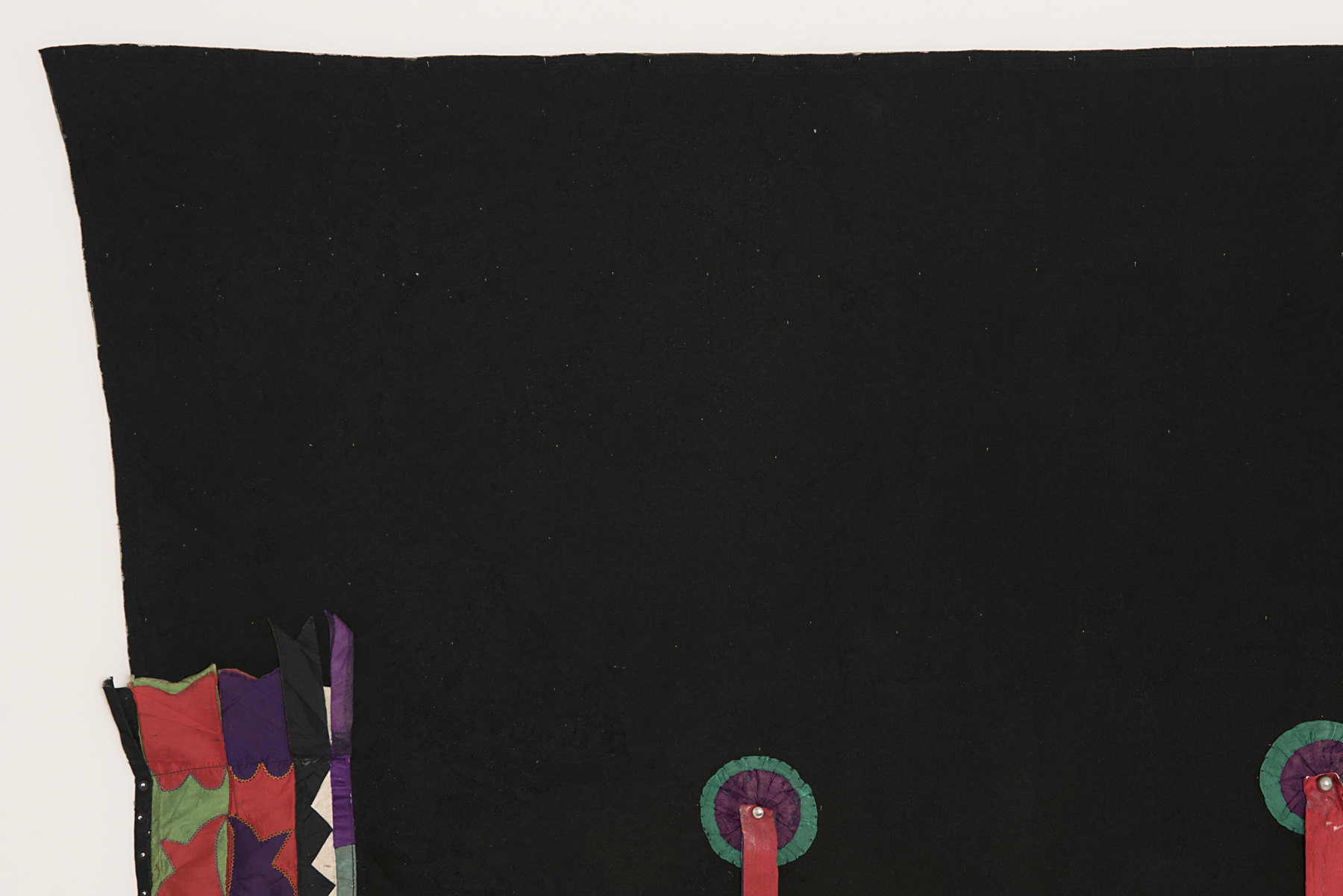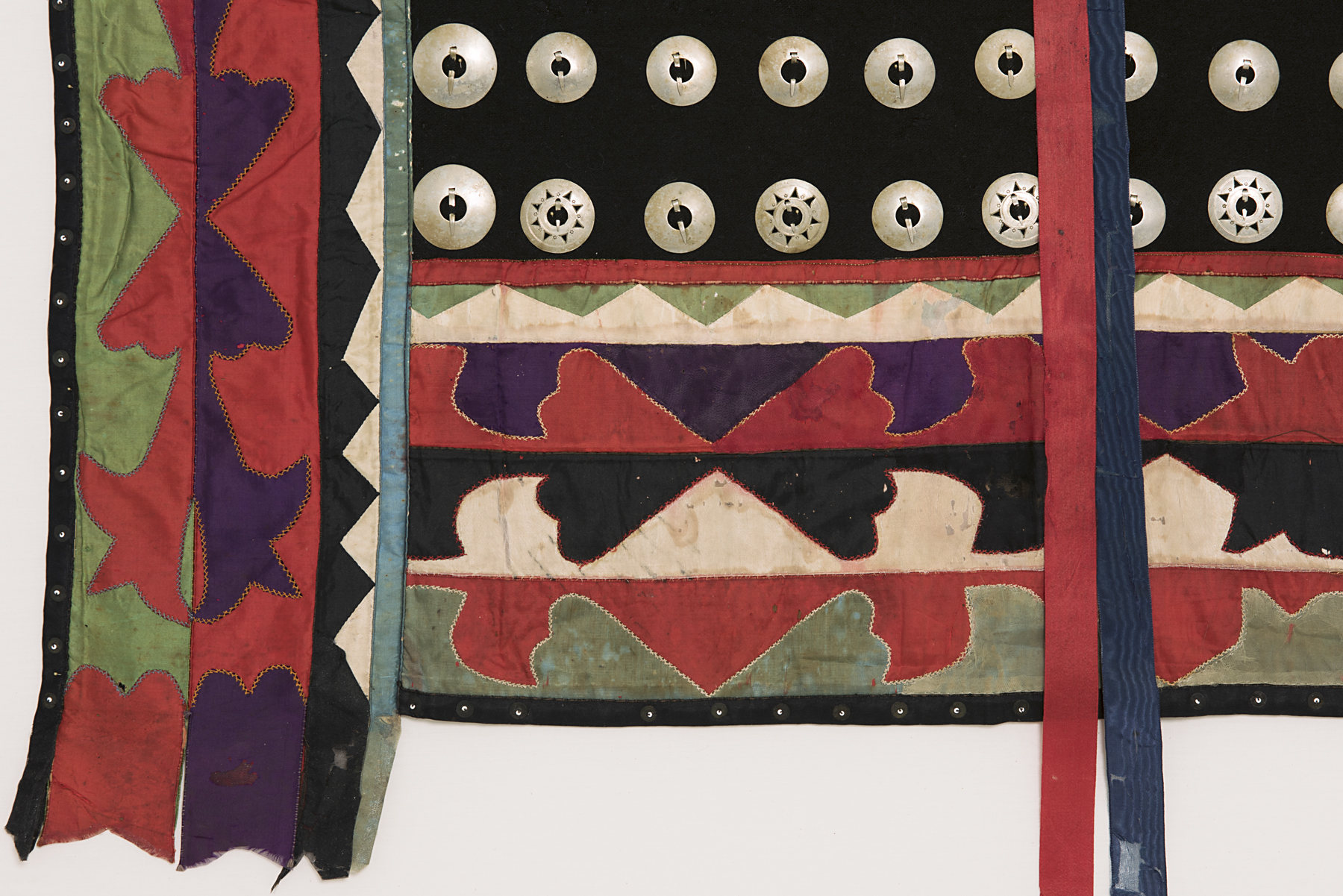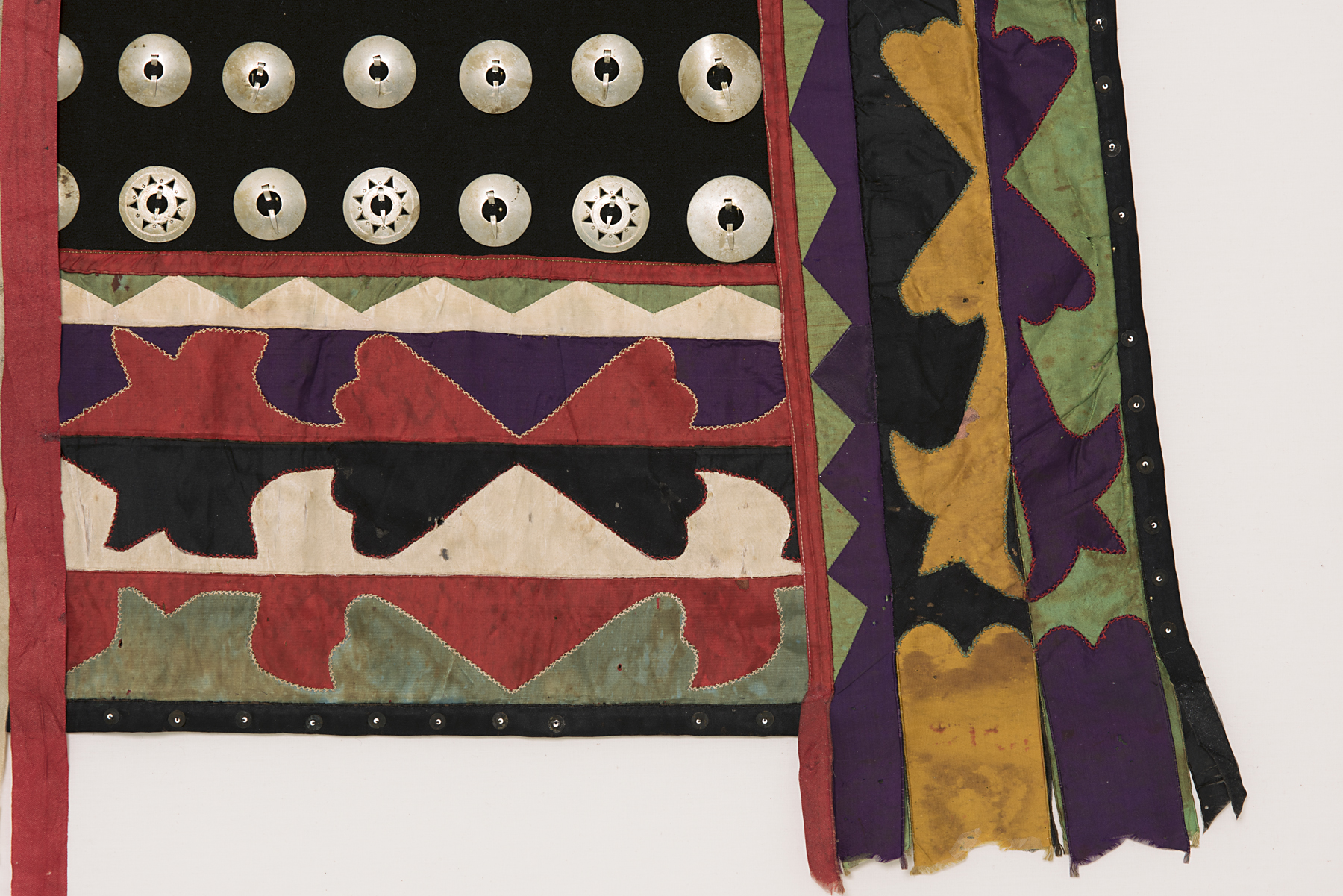wearing blanket, unrecorded Potawatomi artist
Artwork Overview
unrecorded Potawatomi artist, artist
wearing blanket,
late 1800s
Where object was made: United States
Material/technique: nickel silver; appliqué; wool; dyeing; silk ribbon
Dimensions:
Object Height/Width (Height x Width): 130 x 171 cm
Object Height/Width (Height x Width): 51 3/16 x 67 5/16 in
Object Height/Width (Height x Width): 130 x 171 cm
Object Height/Width (Height x Width): 51 3/16 x 67 5/16 in
Credit line: William Bridges Thayer Memorial
Accession number: 2007.1154
Not on display
If you wish to reproduce this image, please submit an image request

